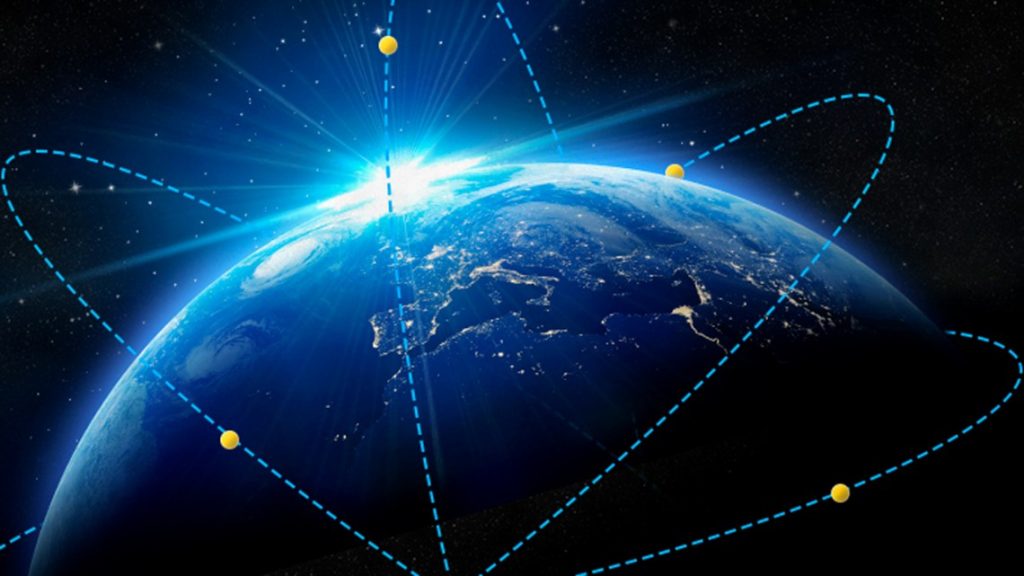In today’s digitally interconnected world, access to reliable and high-speed internet connectivity is essential for various aspects of life, from business and education to communication and entertainment. The concept of satellite constellations, along with advancements in propulsion technology like Orion Propulsion, has revolutionized global communication and connectivity.
Satellite constellations are a network of small satellites working together in harmony to provide comprehensive and continuous coverage across the globe. These constellations are strategically placed in orbit around the Earth, allowing them to communicate with one another and offer seamless connectivity to users on the ground. Orion Propulsion, known for its efficient and reliable propulsion systems, plays a vital role in launching and maintaining these satellite constellations.
What are Satellite Constellations?
Satellite constellations consist of numerous small satellites, commonly known as CubeSats, placed in Low Earth Orbit (LEO). These CubeSats work together as a cohesive unit to deliver various services, ranging from internet connectivity to remote sensing and weather monitoring. The concept of satellite constellations has gained prominence due to their ability to overcome the limitations of traditional geostationary satellites, such as latency and signal dropouts.
The Role of Orion Propulsion in Satellite Constellations

Orion Propulsion is a leading provider of propulsion systems that facilitate the deployment and operation of satellite constellations. Their propulsion technology enables precise orbital maneuvers, which ensures that each satellite can be placed in its designated orbit with great accuracy. Some key advantages of Orion Propulsion include:
Advantages of Orion Propulsion
- Cost-Effectiveness: Orion Propulsion’s propulsion systems are designed to be cost-effective, making it feasible to deploy large constellations of satellites without breaking the bank.
- Reliability: The company’s propulsion technology boasts high reliability, reducing the risk of mission failure and maximizing the lifespan of satellites.
- Efficiency: Orion Propulsion’s propulsion systems are fuel-efficient, allowing satellites to operate for extended periods without the need for frequent refueling.
Key Features of Orion Propulsion
- Electric Propulsion: Orion’s electric propulsion systems offer significant fuel savings compared to traditional chemical propulsion, making them ideal for long-duration missions.
- Green Propellant: Orion Propulsion is at the forefront of using environmentally friendly green propellants, reducing the impact of satellite operations on the space environment.
How Satellite Constellations Connect the World
Satellite constellations have opened up a wide range of opportunities for global connectivity and communication. Some of the significant applications include:
Global Internet Connectivity
Satellite constellations, especially those in the mega-constellation category, have the potential to provide internet connectivity to remote and underserved regions of the world. These constellations can bridge the digital divide and empower people with access to information and resources.
Precision Navigation and Location Services
The precise positioning capabilities of satellite constellations are leveraged in various industries, such as aviation, maritime, agriculture, and logistics. Accurate navigation and location services are crucial for optimizing routes, tracking assets, and ensuring safety.
Earth Observation and Monitoring
Satellite constellations equipped with advanced imaging sensors contribute significantly to earth observation and environmental monitoring. They aid in disaster management, weather forecasting, and studying changes in the Earth’s surface over time.
Challenges and Concerns with Satellite Constellations
While satellite constellations offer numerous benefits, their rapid proliferation has raised some concerns that need to be addressed:
Space Debris
The increasing number of satellites in orbit raises the risk of collisions and contributes to space debris, which poses a threat to other spacecraft and the future of space exploration.
Light Pollution and Astronomy Interference
Satellite constellations can create bright streaks across the night sky, impacting astronomical observations and raising concerns about light pollution.
Regulatory and Legal Issues
The deployment of satellite constellations requires coordination with regulatory bodies to avoid interference with existing satellites and ensure responsible use of orbital space.
Ensuring Sustainability and Responsible Space Practices
To address the challenges associated with satellite constellations, the industry is actively working on solutions:
Mitigating Space Debris
Space agencies and companies are developing technologies to remove defunct satellites and debris from orbit, reducing the risk of collisions and minimizing space debris.
Collaboration and Standards
International collaboration and the establishment of standard practices are essential for promoting responsible space operations and ensuring the sustainable use of orbital space.
Future of Satellite Constellations
The future of satellite constellations looks promising, with ongoing advancements and innovations:
Advancements in Technology
Continued progress in propulsion technology, miniaturization of satellites, and improved data transmission capabilities will enhance the performance and efficiency of satellite constellations.
Expanding Connectivity
Satellite constellations are expected to expand their coverage, connecting even the most remote and inaccessible regions, further reducing the digital divide.
Space Exploration and Research
Satellite constellations will play a crucial role in supporting space exploration missions, enabling communication and data relay for spacecraft venturing deeper into the cosmos.

Leave a Reply